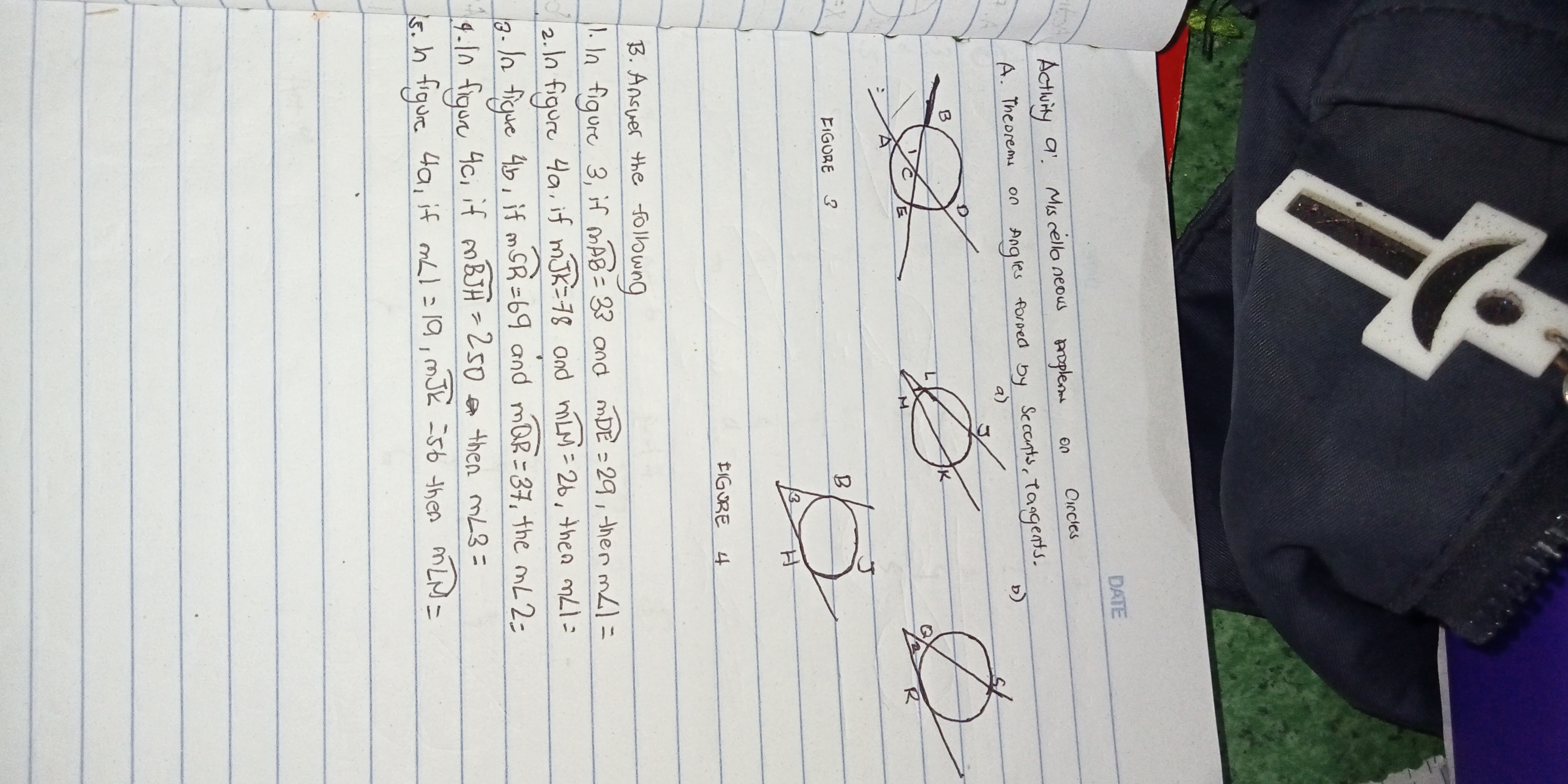1. In figure 3, if m∠BDE = 38° and m∠DEK = 78°, then m∠L = ? 2. In figure 4, if m∠JKL = 29° and m∠MN = 26°, then m∠M2 = ?

Understand the Problem
The question is asking about angles related to different geometrical figures, specifically circles, and how to calculate those angles based on given measurements and relationships between them.
Answer
1. $m∠L = 116°$ 2. $m∠M2 = 55°$
Answer for screen readers
-
$m∠L = 116°$
-
$m∠M2 = 55°$
Steps to Solve
- Understanding Angles in a Circle
In a circle, angles can be determined using relationships derived from the positions of the points involved. The angles around a point or along a line can provide necessary information.
- Finding m∠L from Figure 3
Given:
- $m∠BDE = 38°$
- $m∠DEK = 78°$
To find $m∠L$ which can be calculated by using the exterior angle theorem which states that the measure of an exterior angle (here angle $DEK$) is equal to the sum of the measures of the two opposite interior angles.
Thus:
$$ m∠L = m∠BDE + m∠DEK $$
Substituting the values:
$$ m∠L = 38° + 78° = 116° $$
- Finding m∠M2 from Figure 4
Given:
- $m∠JKL = 29°$
- $m∠MN = 26°$
To find $m∠M2$ which can be determined based on the same principle of exterior angle theorem. In this case, $m∠M2$ is obtained by adding $m∠JKL$ and $m∠MN$.
Thus:
$$ m∠M2 = m∠JKL + m∠MN $$
Substituting the values:
$$ m∠M2 = 29° + 26° = 55° $$
-
$m∠L = 116°$
-
$m∠M2 = 55°$
More Information
The angles provided are derived from fundamental properties of angles in circles, specifically how exterior angles relate to internal angles in geometric figures. This concept is foundational in circle geometry, affecting various other calculations and constructions.
Tips
- Confusing interior and exterior angles. Ensure to identify which angles are opposite before applying the theorem.
- Adding angles incorrectly; verify that the degrees are summed correctly.
- Not recognizing the relationships between angles in different figures or overlapping scenarios.
AI-generated content may contain errors. Please verify critical information